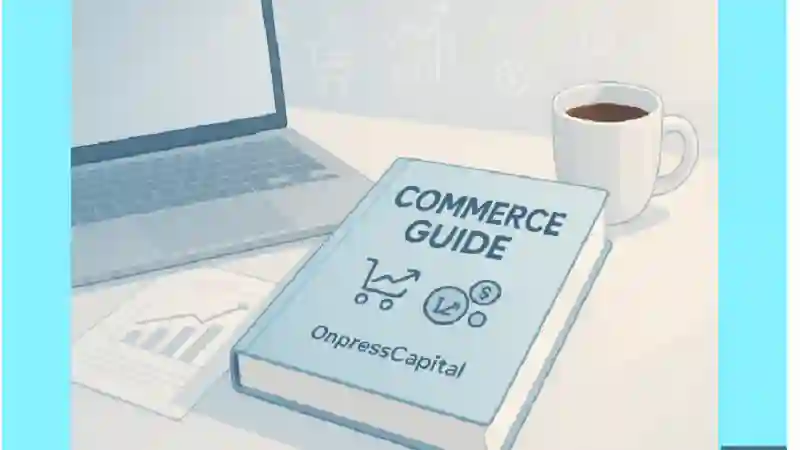Commerce is the foundation of any thriving economy. It connects producers, consumers, and markets across the world. With technology reshaping every aspect of trade, understanding modern commerce has become essential for entrepreneurs, investors, and professionals. This commerce guide onpresscapital provides a clear and structured understanding of how trade, finance, and digital transformation work together to shape modern business landscapes. The goal is to simplify complex financial and commercial concepts, helping readers grasp the dynamics of global and local markets.
1. Understanding Commerce in the Modern Economy
Commerce refers to the exchange of goods and services between individuals or entities, supported by systems like banking, logistics, and finance. It’s not limited to traditional buying and selling anymore. Today, commerce integrates technology, data analytics, and global connectivity.
Modern commerce operates through both physical and digital channels—from brick-and-mortar stores to e-commerce platforms, financial exchanges, and digital payment systems. The rise of fintech, automation, and blockchain has made global trade faster and more transparent.
Commerce, therefore, isn’t just about transactions; it’s about strategy, innovation, and market intelligence. This guide explores how finance platforms such as onpresscapital influence modern commerce practices and empower businesses to adapt to changing trends.
2. The Evolution of Commerce
The journey of commerce can be divided into several key stages:
- Barter System: The earliest form of trade where goods and services were exchanged directly.
- Monetary System: The introduction of currency simplified trade and established economic stability.
- Industrial Revolution: Mass production and mechanization expanded trade and global distribution.
- Digital Commerce Era: The internet, online banking, and digital marketing transformed trade into a data-driven process.
Today, commerce is global, instant, and data-centric. Companies rely on analytics, automation, and financial platforms to optimize operations and manage risk efficiently.
3. The Role of Financial Institutions in Commerce
Financial institutions are the backbone of modern commerce. They provide capital, manage risk, and facilitate global trade. Their main roles include:
- Financing: Providing loans and investment opportunities to businesses.
- Risk Management: Offering insurance and hedging options to protect businesses from market fluctuations.
- Trade Facilitation: Supporting cross-border transactions through trade finance and currency exchange.
- Investment Services: Helping companies and individuals grow wealth through strategic financial products.
- Platforms like onpresscapital exemplify how finance and commerce are interconnected. They simplify access to business capital, promote financial literacy, and support small enterprises that fuel economic growth.
4. Key Components of Modern Commerce
Modern commerce operates through a network of interconnected systems. These include:
a. E-Commerce
Online platforms have revolutionized how products and services reach customers. Businesses now use websites, marketplaces, and social media to engage buyers worldwide.
b. Supply Chain and Logistics
Efficient logistics ensure products move seamlessly from suppliers to consumers. Digital tracking, automation, and artificial intelligence have improved accuracy and reduced delays.
c. Marketing and Consumer Behavior
Modern commerce relies heavily on data-driven marketing. Businesses analyze consumer preferences to create personalized shopping experiences.
d. Financial Integration
From mobile wallets to online banking, integrated financial systems enable fast and secure payments. This integration has expanded access to global markets.
5. The Importance of Financial Literacy in Commerce
Financial literacy is vital for anyone involved in commerce. Understanding how money flows through a business helps make smarter financial decisions. Entrepreneurs, investors, and even consumers benefit from knowledge of budgeting, investment, and market dynamics.
Platforms such as onpresscapital contribute to this by offering resources and insights into business finance. Financially literate business owners can better handle risks, access capital efficiently, and sustain long-term growth.
In simple terms, financial literacy bridges the gap between business potential and success.
6. Challenges in Modern Commerce
Despite its advantages, modern commerce faces numerous challenges. These include:
- Market Volatility: Global events such as economic recessions, wars, and pandemics can disrupt trade flows.
- Regulatory Barriers: Different countries have varying trade laws, taxes, and compliance requirements.
- Cybersecurity Threats: Digital transactions expose businesses to data breaches and fraud.
- Supply Chain Disruptions: Factors like raw material shortages and geopolitical tensions affect global distribution.
- Inflation and Rising Costs: Price fluctuations can impact purchasing power and profitability.
Businesses must adapt through diversification, risk management, and innovation. Strategic planning supported by sound financial practices ensures stability and growth.
7. The Role of Technology in Enhancing Commerce
Technology has become the greatest enabler of global commerce. Innovations like artificial intelligence (AI), machine learning, and blockchain are reshaping the way businesses operate.
- AI in Commerce: Predictive analytics helps companies anticipate consumer needs and manage inventory efficiently.
- Blockchain Technology: Ensures transparent and secure transactions, reducing fraud in international trade.
- Automation: Streamlines supply chain operations, cutting down manual errors.
- Fintech Solutions: Digital financial tools, similar to those offered by platforms like onpresscapital, make financing and investment faster and more accessible.
These technologies not only enhance productivity but also make commerce more inclusive and sustainable.
8. Sustainability and Ethical Commerce
Sustainability has become a central focus in global trade. Modern consumers prefer brands that are environmentally and socially responsible. Ethical commerce ensures that businesses minimize environmental impact, treat workers fairly, and adopt transparent supply chains.
Sustainable commerce isn’t just a moral obligation—it’s a competitive advantage. Companies that invest in green practices attract loyal customers and future-proof their operations against regulatory changes.
9. The Globalization of Commerce
Globalization has created vast opportunities for businesses to expand beyond borders. Companies can now sell products to customers in different parts of the world with minimal barriers.
However, globalization also introduces complexity—different currencies, languages, and regulations. Managing these effectively requires financial agility and strong digital infrastructure.
Platforms such as onpresscapital support this global expansion by simplifying cross-border financing and providing insights into international market trends. Businesses that embrace globalization responsibly can achieve exponential growth.
10. Strategies for Success in Modern Commerce
To succeed in the evolving world of commerce, businesses must adopt smart strategies that balance innovation with practicality. Here are key approaches:
- Invest in Technology: Automation and analytics are no longer optional—they’re essential.
- Focus on Customer Experience: Personalized service leads to long-term customer loyalty.
- Maintain Financial Discipline: Sound budgeting and investment decisions prevent unnecessary losses.
- Build Sustainable Operations: Ethical sourcing and eco-friendly practices build a strong brand reputation.
- Embrace Adaptability: Markets evolve quickly; agility ensures survival and success.
These strategies combine traditional business wisdom with modern innovation to keep companies relevant and profitable.
11. The Future of Commerce
The future of commerce is deeply tied to digital transformation. Emerging technologies like AI, quantum computing, and decentralized finance (DeFi) will redefine global trade.
We are moving toward a world where businesses operate through integrated platforms, offering seamless access to funding, logistics, and marketing. Consumers will continue to expect personalized, fast, and secure shopping experiences.
Platforms aligned with innovation, such as onpresscapital, illustrate how financial solutions can empower commerce ecosystems—connecting businesses, investors, and consumers in smarter ways.
12. Conclusion
Commerce is more than just the exchange of goods—it’s the lifeblood of economic progress. In today’s interconnected world, understanding commerce means mastering the balance between technology, finance, and human needs.
This commerce guide onpresscapital has explored how modern trade functions, the role of finance, and the importance of sustainability, innovation, and adaptability. By staying informed and strategically managing financial and technological tools, businesses can thrive in the competitive global market.
Ultimately, success in commerce comes from combining knowledge, flexibility, and integrity—principles that define the future of global trade.

